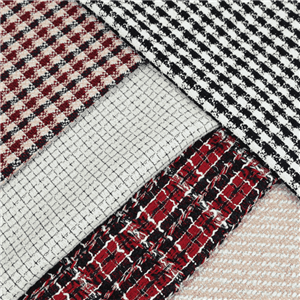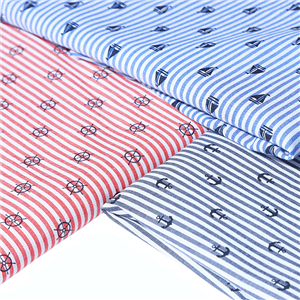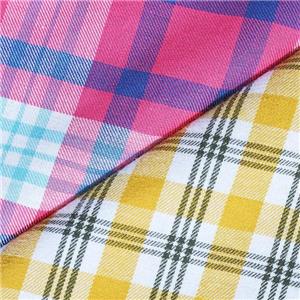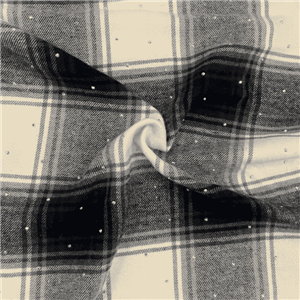What Fabric is Denim Made Of?
Denim is a durable cotton fabric known for its rugged texture and twill weave, traditionally made from 100% cotton. However, modern denim often includes a blend of materials such as polyester or elastane to enhance functionality, comfort, and stretchability. The core structure of denim fabric relies on cotton because of its breathability, strength, and dye-absorption capabilities. Cotton gives denim its classic feel and ability to fade uniquely over time, which is a major part of its aesthetic appeal.
Today, denim comes in various forms, including stretchable denim fabric and selvedge denim fabric, catering to evolving fashion needs. Cotton remains the primary component due to its natural properties and sustainability potential when sourced responsibly. Let’s dive deeper into what makes denim fabric so iconic, its manufacturing process, applications, types, and global market dynamics.
What is Denim Fabric?
Denim fabric is a rugged, twill-woven textile, typically dyed with indigo, where the weft threads pass under two or more warp threads, creating a diagonal ribbing visible on the reverse. This is what distinguishes denim from regular cotton fabrics.
Historically, denim originated in the 17th century from a fabric known as "Serge de Nîmes" in France. Over time, it evolved into what we now know as denim, gaining massive popularity in the United States in the 19th century thanks to Levi Strauss’s introduction of jeans for gold miners.
Today, denim fabric material includes not just 100% cotton but also cotton blends—commonly mixed with polyester for durability and elastane for flexibility. This evolution allows denim to be tailored to different applications, from Japanese denim fabric known for its artisanal quality to mass-produced denim fabric by the yard for wholesalers and designers.

How is Denim Fabric Made?
Understanding how denim fabric is made gives insight into its durability, texture, and sustainability profile. The production process includes:
1. Raw Material Selection
Most denim begins with high-quality cotton, chosen for its strength, dyeability, and comfort. Premium varieties like long-staple cotton from the U.S., India, or Egypt are often used.
2. Spinning the Yarn
The cotton fibers are carded and spun into yarn. The quality of yarn affects the final texture and appearance of the denim.
3. Dyeing
One of the most iconic aspects of denim fabric material is its indigo color. There are two main types of dyes used:
Natural indigo dye: Derived from plants, mainly used in artisanal denim like Japanese denim fabric.
Synthetic indigo dye: More common in mass production.
Rope dyeing and slasher dyeing are two standard methods. Rope dyeing results in better color depth and is often used for premium denim.
4. Weaving
The twill weave (typically 3x1) gives denim fabric its strength and signature diagonal rib. Variants like selvedge denim fabric are woven on traditional shuttle looms, producing a clean, self-finished edge that resists fraying.
5. Finishing Treatments
Post-weaving, denim is often washed or chemically treated to achieve specific textures or appearances:
Enzyme wash
Acid wash
Stone wash
Laser finishing
These processes affect both the look and environmental impact of the fabric.
What Types of Denim Fabrics Are There?
Denim comes in a wide range of styles and constructions, each suited for different applications. Below is a categorized breakdown:
| Type | Description |
|---|---|
| Raw Denim | Unwashed after dyeing; stiff and fades uniquely with wear. |
| Washed Denim | Pre-washed for softness and minimal shrinkage. |
| Stretch Denim | Includes spandex or elastane for flexibility; popular in skinny jeans. |
| Selvedge Denim | Premium denim woven with finished edges, usually heavier and more durable. |
| Lightweight Denim | Below 10 oz per yard; used in shirts and summer wear. |
| Heavyweight Denim | 14+ oz per yard; used for jackets and workwear. |
| Coated Denim | Treated for leather-like appearance or water resistance. |
Emerging innovations include biodegradable blends and laser-treated fabrics aimed at reducing the environmental footprint of denim production.
How is Denim Fabric Used?
Denim fabric is globally recognized not just for jeans but for its adaptability in various sectors. Common uses include:
Fashion Industry:
Jeans: The most iconic use of denim fabric material, ranging from skinny to wide-leg fits.
Jackets: Durable and stylish for both casual and semi-formal wear.
Shirts and Dresses: Especially lightweight or stretchable denim fabric is favored.
Skirts & Shorts: Fashion-forward yet functional.
Home Textiles:
Curtains and upholstery due to denim’s thickness and durability.
Cushion covers and slipcovers, especially using denim fabric by the yard for customization.
Other Uses:
Bags, backpacks, and shoes.
Industrial uniforms, overalls, and aprons.
Creative applications in art and upcycling projects.
Where is Denim Fabric Produced?
Denim is a global industry with production centers around the world. Here's a snapshot of major production regions:
| Country | Key Features |
|---|---|
| China | Largest producer; offers extensive denim fabric wholesale options. |
| India | Known for innovative blends and large-scale spinning and weaving facilities. |
| Turkey | Strong in mid-to-high-end denim; popular for European markets. |
| Bangladesh | Competitive pricing; strong garment manufacturing integration. |
| USA | High-quality, niche producers; birthplace of selvedge denim fabric revival. |
| Japan | Premium artisanal denim, especially Japanese denim fabric, known worldwide. |
According to Statista, the global denim market was valued at USD 64.5 billion in 2023, with projections to reach over USD 87 billion by 2030.
What is the Cost of Denim Fabric?
Pricing varies based on fabric type, production process, order quantity, and quality:
| Type | Estimated Cost (USD/yard) |
|---|---|
| Basic cotton denim | $2.00 – $4.00 |
| Stretchable denim fabric | $3.50 – $5.00 |
| Selvedge denim fabric | $8.00 – $15.00+ |
| Japanese denim fabric | $10.00 – $25.00+ |
| Organic or sustainable denim | $5.00 – $10.00 |
| Bulk orders (denim fabric wholesale) | Discounts up to 30–50% |
Key price influencers:
Fiber content (100% cotton vs. blended)
Dyeing method (natural indigo is more expensive)
Weight and GSM
Eco-certifications
Environmental Impact of Denim Fabric
Denim production, while iconic, comes with notable environmental concerns:
1. Cotton Cultivation
Conventional cotton farming uses high amounts of water and pesticides. According to WWF, it takes up to 10,000 liters of water to produce 1kg of cotton.
2. Dyeing and Finishing
Indigo dyeing involves repeated dipping and large water consumption. Washing treatments often use chemicals that can contaminate waterways.
3. Sustainability Trends
Modern advancements aim to reduce denim’s ecological impact:
Waterless dyeing technologies
Use of recycled cotton or organic cotton
Laser and ozone finishing
Biodegradable stretch fibers
GRS and BCI certifications for responsible sourcing
Sustainable denim fabric material is becoming a preference for brands aligning with ESG (Environmental, Social, Governance) goals.
Denim Fabric Certifications
Certifications assure buyers and end-users of denim's safety, ethical sourcing, and sustainability:
| Certification | Meaning |
|---|---|
| OEKO-TEX 100 | Free from harmful substances. |
| GOTS | Organic certification for both raw materials and processing. |
| GRS | Verifies recycled content and responsible processing. |
| BCI | Better Cotton Initiative – promotes better standards in cotton farming. |
| ISO 9001 | Quality management certification often held by top denim fabric wholesale suppliers. |
For buyers sourcing denim fabric by the yard or in bulk, these labels help differentiate trusted suppliers.
FAQs
Is denim always 100% cotton?
No. While traditional denim fabric is 100% cotton, many modern versions include polyester, spandex, or TENCEL for added functionality.
What is the difference between denim and jeans?
Denim is the fabric; jeans are the garments made from that fabric.
Is denim breathable?
Cotton-based denim is relatively breathable, especially lighter weights. Blended or coated denim may reduce breathability.
What is selvedge denim?
Selvedge denim fabric is woven on shuttle looms, producing a self-finished edge that prevents unraveling and is often considered premium.
What makes Japanese denim special?
Japanese denim fabric is renowned for meticulous craftsmanship, high-quality cotton, natural dyeing, and small-batch production.
Where can I buy denim fabric by the yard?
Many textile suppliers and manufacturers offer denim fabric by the yard through online platforms or denim fabric wholesale channels.
How stretchy is stretch denim?
Stretchable denim fabric typically contains 1–5% elastane and offers flexible movement, ideal for skinny and slim-fit garments.
Conclusion
Denim remains one of the most iconic and versatile fabrics in global textile history. From its humble origins to high-fashion runways, denim fabric continues to evolve with technology and sustainability trends. Whether you're sourcing denim fabric wholesale, exploring artisanal Japanese denim fabric, or experimenting with stretchable denim fabric, the possibilities are endless.
Understanding its material foundation—primarily cotton—along with various types, applications, production origins, and environmental considerations, empowers both manufacturers and buyers to make informed decisions.
At Honry Fabric, we specialize in high-quality woven textiles, including a wide variety of denim fabric by the yard and custom denim solutions tailored to global B2B customers. Whether you're a fashion brand, fabric wholesaler, or designer, we invite you to explore our premium fabric collections and sustainable options.




